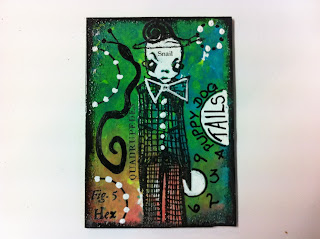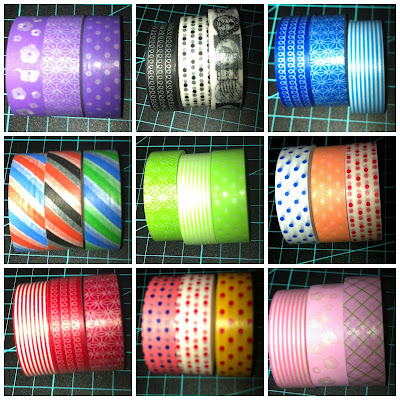The aim of this project was to put all my old family photos
and information and family tree into a form that is appealing to look at and
feels old and antique to match the old photos. Now it is like a family “story
book” and also an heirloom for the family to pass down through the generations.
The materials used are as follows:-
1x “7Gypsies” Stacked Accordion Journal
1x packet Kaisercraft Tiny Alpha stickers
Assorted scrap booking papers
Assorted Kaisercraft mini ink pads
Ranger Distress ink
Glossy Accents medium for adhesive
Prima Flowers and miniature doilies
Self adhesive jewels
Antique look Keyhole
Metal corner pieces for cover
Chipboard word- Family
Mod Podge Matt sealer/adhesive
Ranger Ink applicator pad / tool
Gold and bronze paint
Copies of old photos
Family tree typed or hand printed
Old buttons /Old postage stamps
Fabric for back cover
Ribbon/lace/Strips of calico
Thin wadding (padding)
Embossed cardstock
Leather strap/ tie
- This
is how I put it all together. I started with the front cover and coloured
the embossed cardstock for the front cover. I coloured it with the mini
Kaisercraft ink pads using the ink applicator pad to spread the colour. I
placed a small square of wadding (padding) under the embossed paper to give
it more dimension.
- I
then coloured the 2cm calico strips of fabric with Antique linen distress
ink and glued them down with Mod Podge on the edges of the embossed paper.
I added the metal details – the keyhole and metal corner pieces. I then used
ribbon across the top at an angle and glued word ‘Family’ on top. I added
a flower and crocheted doily aged with ink to the corner.
- Next
was the back cover using brown fabric instead of embossed cardstock, but
using the same principle of padding underneath and calico strip edges. But
the only embellishment was a large brad for securing the leather tie, this
was added last.
- Next was preparing all the pages with some subtle inked colours. I used “Sandstone” and “Fairy floss” blended. I distressed the page edges with “Antique linen”. I then worked out my layout of photos, and chose the back ground papers to compliment the photos. I used lace, flowers and jewels and pearls for feminine decoration and gold painted chip board frames, old buttons and old postage stamps for the masculine look. I used the Tiny Alpha letters for the names under the photo.
- I
typed up the little stories about the family members and put them on
journal tags or as folded accordion style inside a pocket. The family tree
was inked to “age” the paper and glued onto one of the inserts in the
album. I attached the front and back pages to the album covers.
Roz Kelly, Kalbarri, WA






































